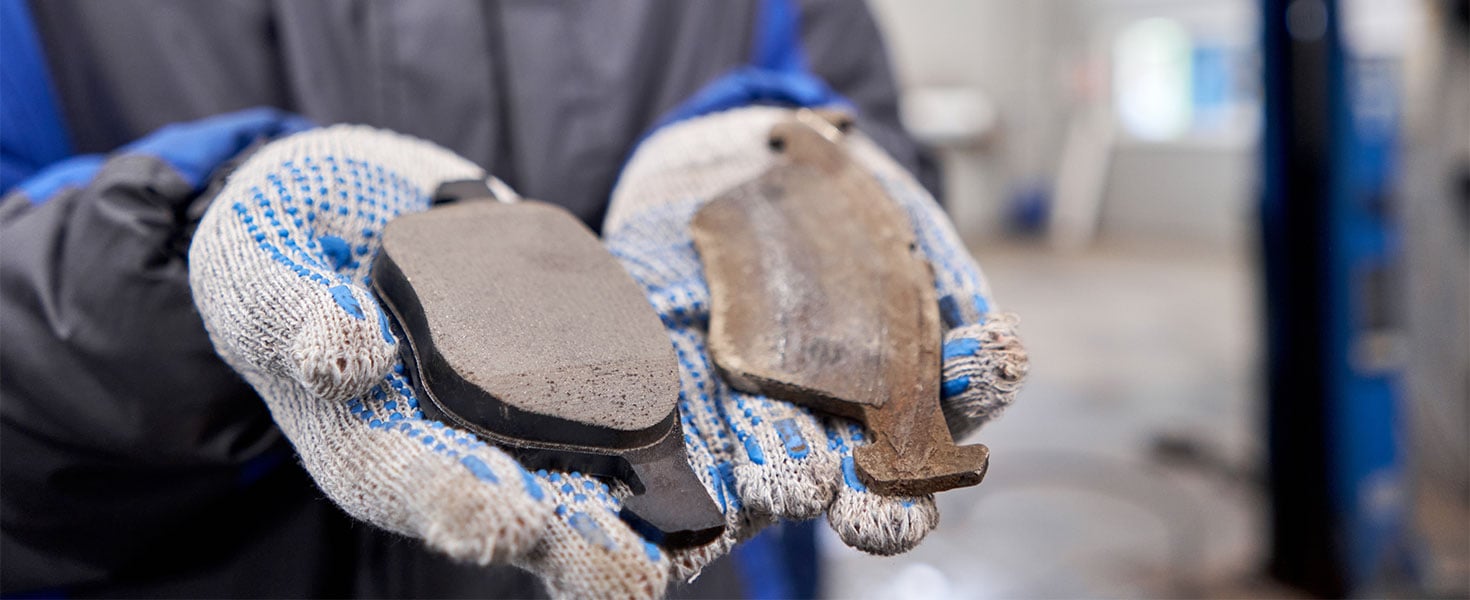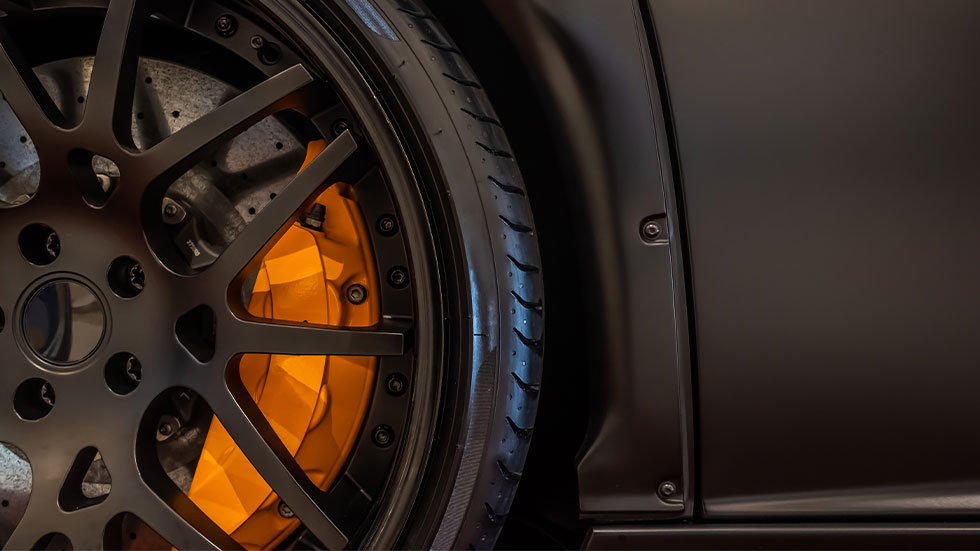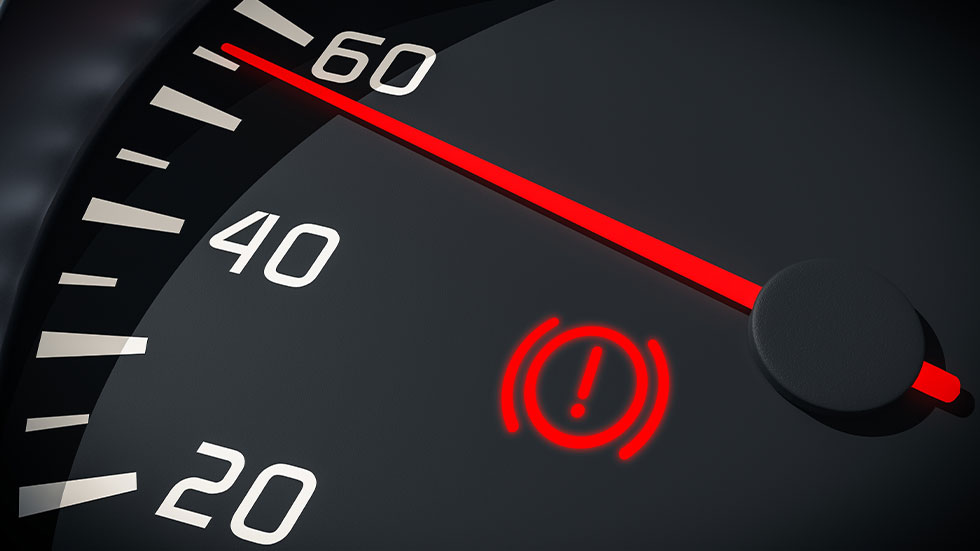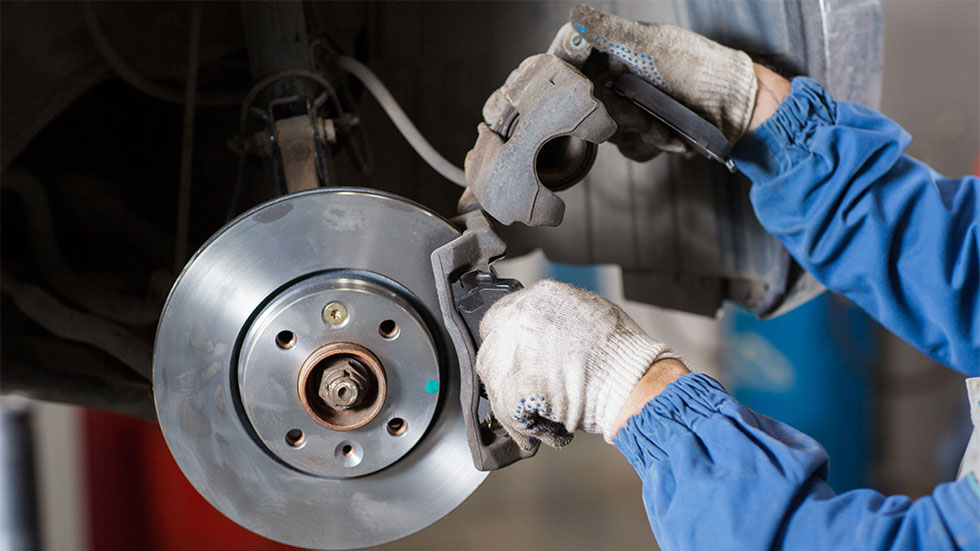Signs That Your Brake Pads Need Attention
How brake pads work, tips on when to replace them, and how much you'll pay


Your vehicle's ability to brake safely is among its most important features. Being able to consistently rely on your vehicle's stopping power also means knowing when to replace brake pads. A functioning, healthy braking system is critical to keeping your vehicle in safe working order.
This article look at how brake pads work, some of the symptoms of worn brake pads, and basic guidelines for how often to replace them.

HOW DO MY BRAKE PADS WORK?
Auto manufacturers install both disc brakes and drum brakes on their vehicles. Disc brakes use a caliper that holds brake pads on a metal rotor to slow the vehicle, while drum brakes use shoes to press against a drum inside the wheel to slow the vehicle.
Disc and drum brakes were both patented in 1902, and the design of the disc brake is considered superior. However, the technology to create a reliable, working disc brake system wasn't implemented until 1953 with Jaguar's C-Type race car, which won the 24 Hours of Le Mans car race that same year.
Since both types of brakes have their advantages and disadvantages, manufacturers typically install disc brakes on the front of their vehicles and drum brakes on the rear. While disc brakes are more efficient and better at dispersing heat, drum brakes are critical for keeping vehicles safely parked.

WHAT ARE THE SIGNS THAT MY BRAKE PADS NEED ATTENTION?
For those of us who drive every day, feeling the subtle shifts in performance as car parts wear can be unsettling. Luckily, many car parts, including brake pads, come equipped with features designed to warn you before parts wear out completely. This way, you can repair or replace the parts without doing damage to other vehicle components.
Most modern brake systems come equipped with brake pad wear indicators. These are usually small strips of metal that protrude out from the brake pad. As your pads wear down, these wear indicators will eventually come into contact with your brake rotor, making an audible squeak or squeal when you are slowing down or stopping your car. For many drivers, this is the first sign that brake pads need to be replaced.
Vibrations when steering or in the brake pedal when applying brakes can also be symptoms of worn brake pads. A vibration can also indicate warped rotors or other serious problems in the braking system. If left unattended, these issues could lead to additional damage and more costly repairs.

HOW LONG DO BRAKE PADS LAST?
Typically, your front brake pads are the ones that bear the brunt of wear and tear, so these should be replaced between 30,000 and 70,000 miles. Mileage will vary based on a range of factors, including the make and model of your vehicle, how aggressively it’s driven, and road conditions.
HOW MUCH TO REPLACE BRAKE PADS?
Brake pad replacement costs will depend on the extent of the work required to repair your braking system as a whole. You can expect brake pads to cost between $100 – $300 per axle on most vehicles. This will vary based on the make and model of your vehicle, as well as other factors. If your brake rotors also need to be repaired or replaced, expect additional costs.
